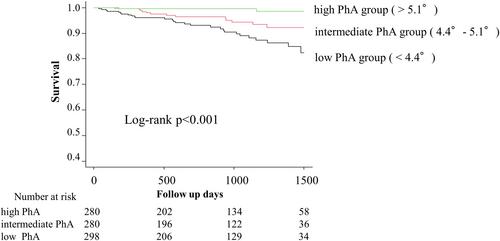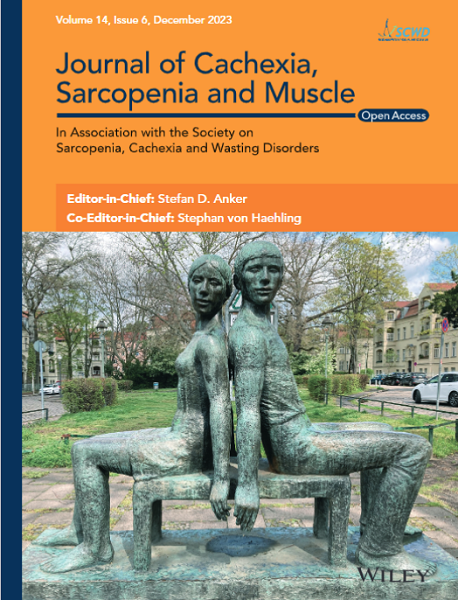The importance of preoperative physical function assessment for post-operative intervention has been reported in older patients undergoing cardiovascular surgery. Phase angle (PhA), measured using bioelectrical impedance analysis, is an indicator of cellular health and integrity and is reported as a prognostic factor in several chronic diseases; however, its association with the long-term prognosis of cardiovascular surgery remains unclear. This study aimed to investigate the prognostic value of PhA for long-term mortality in patients undergoing cardiovascular surgery.
This retrospective cohort study included consecutive patients who underwent elective cardiovascular surgery between October 2016 and March 2021 at Nagoya Heart Center, Japan. PhA was assessed using bioelectrical impedance analysis before surgery, and physical function measures (gait speed, grip strength and short physical performance battery [SPPB]) were measured synchronously. The association between PhA and all-cause mortality after discharge was assessed using Kaplan–Meier and multivariate Cox regression analyses. The incremental prognostic value of PhA was compared with other physical function measures using net reclassification improvement (NRI) and integrated discrimination improvement (IDI).
A total of 858 patients were included in the present analysis (mean age = 68.4 ± 11.9 years, 67.6% male). PhA positively correlated with body mass index (ρ = 0.38, P < 0.001), skeletal muscle mass index (ρ = 0.58, P < 0.001), usual gait speed (ρ = 0.44, P < 0.001), grip strength (ρ = 0.73, P < 0.001) and SPPB (ρ = 0.51, P < 0.001). The mean follow-up period, within which 44 (4.7%) died, was 908.9 ± 499.9 days for the entire cohort. Kaplan–Meier survival curves based on the PhA tertiles showed that higher PhA was associated with better survival (log-rank test, P < 0.001). The Cox regression analysis showed the independent association of PhA with mortality risk (hazard ratio: 0.91 per 0.1° increment; 95% confidence interval [CI]: 0.87–0.95; P < 0.001). The NRI and IDI showed significant improvements in predicting mortality after adding PhA to the clinical model consisting of age, sex and cardiac and renal function (NRI: 0.426, 95% CI: 0.124–0.729, P = 0.006; IDI: 0.037, 95% CI: 0.012–0.062, P = 0.003). The predictive model consisting of the clinical model and PhA was superior to the model consisting of the clinical model and each of the other physical function indicators (P < 0.05).
PhA correlated with physical function and independently predicted long-term mortality after cardiovascular surgery. The additive prognostic value of PhA compared with the other physical function measures suggests the clinical usefulness of preoperative PhA for risk stratification in planning post-operative treatment and rehabilitation.



